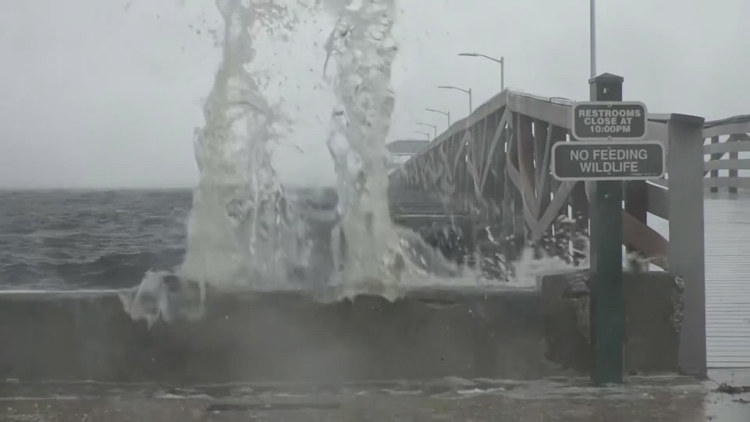TAMPA, Fla. — Hurricane Helene was upgraded to a Category 3 storm Thursday afternoon, just hours before it was set to make landfall.
The storm is expected to bring "catastrophic" winds and storm surge as it tracks toward Florida's Gulf Coast, according to the National Hurricane Center (NHC). The center issued hurricane and storm surge warnings for parts of the coast, including the Tampa Bay area, ahead of potential impacts from the storm.
Helene has already become a household name throughout Florida, but how did meteorologists choose what to call the storm? It's part of a long, and somewhat complicated, history.
While the NHC tracks and categorizes hurricanes, it doesn't control the naming of tropical storms or hurricanes. That power is held by the World Meteorological Organization (WMO).
"Historically, storms have been named for a long time, but haphazardly and after the fact," WMO said. "As weather forecasting developed as a science, storms were identified by their latitude-longitude. However, using short, distinctive names – in written and spoken communications – proved quicker and less subject to error."
Hurricane naming conventions went through numerous changes, according to NOAA. For several hundreds of years in the West Indies, the storms were named after the particular saint's day when it occurred. An Australian meteorologist named Clement Wragge began naming tropical storms after women before the end of the 19th century.
The U.S. originally named storms by using a phonetic alphabet (Able, Baker, Charlie, etc.) for two years before an international phonetic alphabet was introduced in 1953, NOAA said. That's when the United States started using only names of women for storms. That ended in 1978 when men's and women's names were added to Eastern North Pacific storm lists. Men's and women's names were included in lists for the Atlantic and Gulf of Mexico the next year.
Hurricanes are now named according to a list corresponding to the region they originate in. Click here for the full list of hurricane names through 2029.



